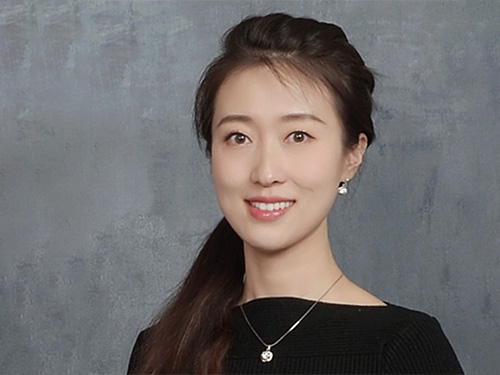Meng Jing, Ph.D. – Dow

Please tell us about your background: where you grew up, studied, and why you chose the field you did.
I grew up in Xi’an, Shaanxi Province of China. I went to University of Science and Technology of China for my undergraduate study in Chemistry with my junior and senior years’ research focusing on the synthesis and characterization of inorganic nanomaterials. After graduation, I attended the University of Minnesota, Twin Cities, focusing on aptamer selections via capillary electrophoresis and microfluidic devices. In my postdoctoral research at Masonic Cancer Research Center I studied robust assay development based on LC-MS/MS instrumentation for tobacco carcinogen metabolites analysis and DNA adducts analysis in mitochondria DNA of Age-related Macular Degeneration (AMD) diseased samples.
What does your current position entail? How does it tie into your previous experience, and where is it going?
Ever since joining Dow, I have been developing and applying a variety of analytical separation techniques to provide innovative solutions for product launches, and solving challenging manufacturing and technical service issues. I have been leading the LC-MS method development for identification and quantitative analysis of a broad range of small and oligomeric molecules across a broad range of Dow businesses. I am leading the 2D-LC community within Dow to boost its application in chemical industry. My expertise in capillary electrophoresis (CE) prompts me to explore solutions for complicated colloid system characterization including colloidal particle surface, particle-surfactant, particle-polymer, and particle-particle interactions through coupling with size-based separation techniques such as asymmetrical flow field-flow fractionation.
In what context did you first learn about light scattering and Wyatt Technology's instruments?
When I joined Dow Analytical Science, I learned that our polymer separation group uses a Wyatt DAWN™ MALS instrument as the detector downstream of separations by size-exclusion chromatography (SEC) or asymmetric-flow field-flow fractionation (AF4, based on Wyatt’s Eclipse™ system). With the DAWN online, it becomes possible to obtain absolute molecular weight information, which is critical for our work but may otherwise be difficult to obtain in the case of complex polymer structures and/or the lack of appropriate Mw standards.
How has your Wyatt instrumentation contributed to your research and development studies?
Wyatt’s AF4-MALS system has played a critical role in our characterization of industrial particles. The combination of AF4 and CE in separation mode enables the usage of different detection techniques. While CE reveals the chemical composition of latex particles and their interaction mechanism with nonionic/anionic stabilizers, AF4-MALS-RI revealed the apparent molecular weight, radius, apparent density and morphology of particles. When used in offline coupling (AF4 x CE) mode, the orthogonal separation (size x electrophoretic mobility) provides greatly improved separation efficiency for both inter- and intracomponent resolutions. Expanding this technique to submicrometer sizes (400 µm) and multiple components (5 particle populations) holds great potential for industrial applications involving complex particle mixtures.

Wyatt’s Eclipse/DAWN AF4-MALS system has played a critical role in our physical-chemical characterization of complex mixtures of industrial particles.
